#qing ming festival
Text
Qing Ming Festival (清明节), also known as Remembrance of Ancestors Day or Tomb-Sweeping Day takes place on the 15th day after the Spring Equinox. This means it usually takes place on April 4th or April 5th in the western calendar. As done annually, my family visited the temple to pray to my father and ancestors with offerings of vegetarian food and joss papers.
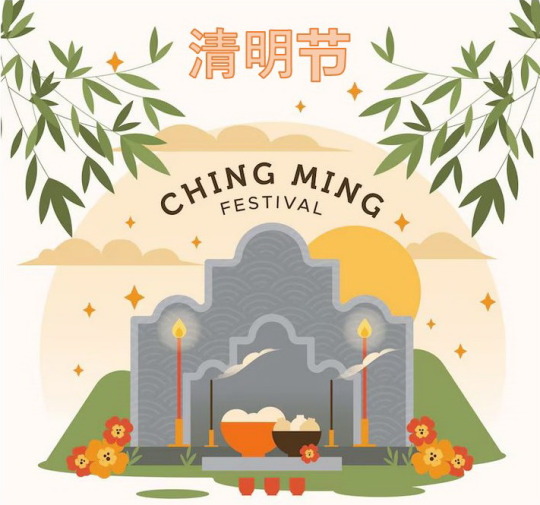


#Qing Ming Festival#Ching Ming Festival#清明节#Tomb-Sweeping Day#Chinese#Festival#Custom#Prayer#Ritual#Joss Sticks#Joss Paper#Candle#Temple#Offerings#Vegetarian Food#Food#Buffetlicious
36 notes
·
View notes
Text

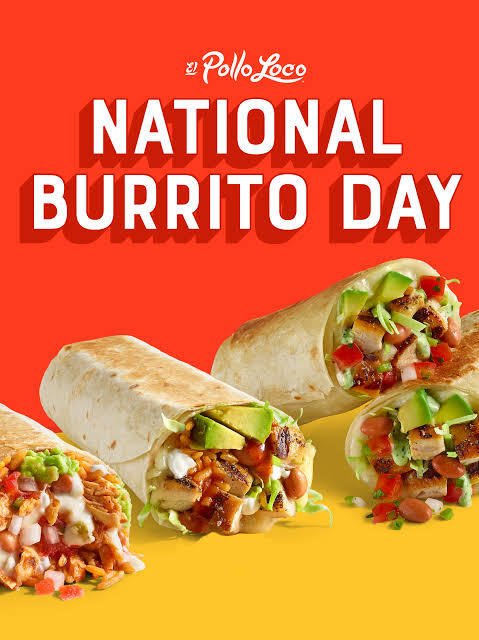
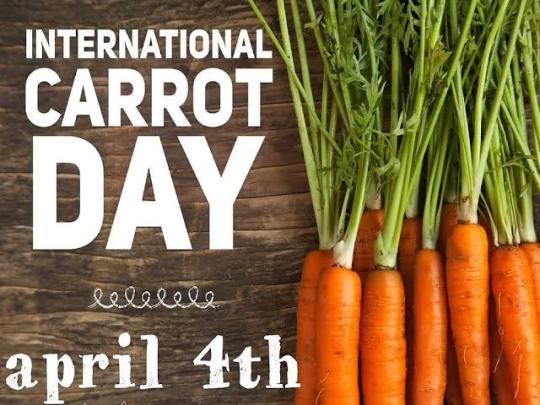

Today is 4th of April.
Today is Qing Ming Festival, National Burrito Day, International Carrot Day, Vitamin C Day.
1 note
·
View note
Photo


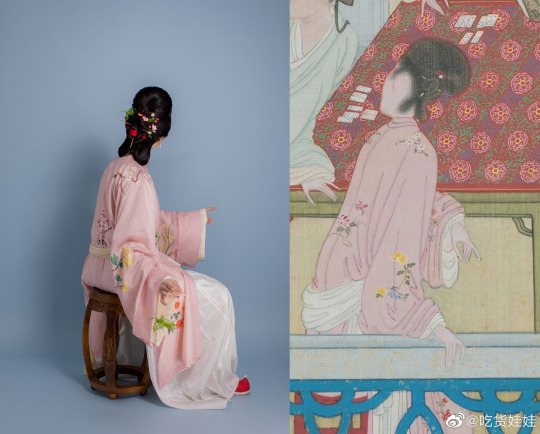




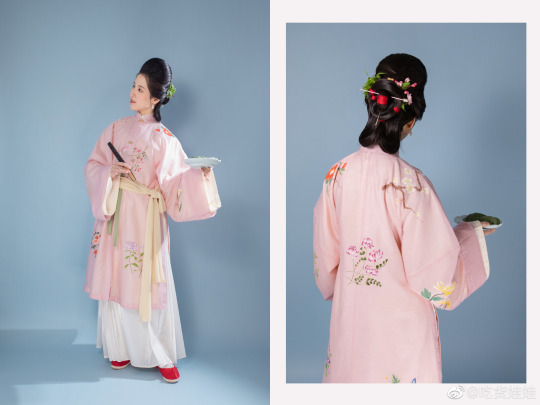

[Hanfu · 漢服]Chinese Early Qing Dynasty Traditional Clothing & Qingming Festival/清明節
————————
Han ethnic Women's attire & Hairstyle ”Peony Head (牡丹头) in the Early Qing Dynasty
Han ethnic Women's attire and hairstyle in the early Qing Dynasty was not like men that force to change by the Qing government. Women's attire and hairstyle were not particularly different from late Ming Dynasty.
————————
【Qingming Festival/清明節】
The Qingming festival or Ching Ming Festival,also known as Tomb-Sweeping Day in English (sometimes also called Chinese Memorial Day, Ancestors' Day, the Clear Brightness Festival, or the Pure Brightness Festival), is a traditional Chinese festival observed by ethnic Chinese in mainland China, Hong Kong, Macau, Taiwan, Malaysia, Singapore, Cambodia, Indonesia, Philippines, Thailand, and Vietnam.
During Qingming, Chinese families visit the tombs of their ancestors to clean the gravesites and make ritual offerings to their ancestors. Offerings would typically include traditional food dishes and the burning of joss sticks and joss paper.The holiday recognizes the traditional reverence of one's ancestors in Chinese culture.
The origins of the Qingming Festival go back more than 2500 years, although the observance has changed significantly. It became a public holiday in mainland China in 2008, where it is associated with the consumption of qingtuan,green dumplings made of glutinous rice and Chinese mugwort or barley grass.
--------
【Qingming Festival Customs: 插柳/戴柳 put willow/wearing willow 】
“清明不插柳,红颜变皓首”:
As the saying goes, it means in Qingming Festival, in the first ten days of March of the lunisolar calendar every year, is the day when traditional customs go to graves to worship ancestors. According to the old custom, when returning from worshiping ancestors during the Qingming Festival, people have to break off willow branches and wear them on head.It is said that if people don’t do this, young people will become old people with white hair.
According to the "Qing Jialu/清嘉录" written by Gu Lu of the Qing Dynasty:
「清明日,滿街叫賣楊柳,人家買之插於門上,農人以插柳日晴雨佔水旱,若雨,主水。」
every Qingming Festival, "willows are sold all over the street, and people buy them and put them on the door.
Q:why wearing willow or put willow on the door?
Jia Sixie(贾思勰)of the Northern Wei Dynasty(386-535) said in "Qi Min Yao Shu/齐民要术": “取柳枝著户上,百鬼不入家。”
“Take the willow and put it on the door/house, and a hundred ghosts will not enter the house”
It is said that a hundred spirits come out on Qingming Festival, and people need to worship their ancestors while carefully keep a certain distance from other spirits and keep them out of house. Willow has become a weapon for people to avoid evil spirits and protect people from them.
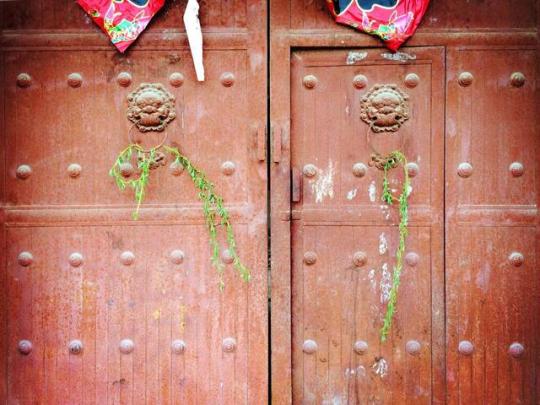
The custom is still widespread in parts of China especially Wudi(吴地) area: area in the south of the Yangtze River
----
In ancient times, there were many interesting Qingming Festival customs. Apart from visit the tombs of their ancestors to clean the gravesites and make ritual offerings to their ancestors, there were also a series of custom sports activities such as spring outing, swinging, Cuju (蹴鞠:is an ancient Chinese ball game) , playing polo etc.
_______
🧚🏻Recreation Work:@吃货娃娃
🔗Weibo:https://weibo.com/1868003212/MAyid6Mtv
_______
#Chinese Hanfu#hanfu#early qing dynasty#Ming Dynasty#Late Ming Period#Qingming Festival/清明節#Chinese Culture#chinese customs#hanfu accessories#chinese traditional clothing#chinese#chinese historical fashion#historical fashion#吃货娃娃#插柳/戴柳
146 notes
·
View notes
Text
【 Miracle Nikki CN 】 Qing Ming 2023
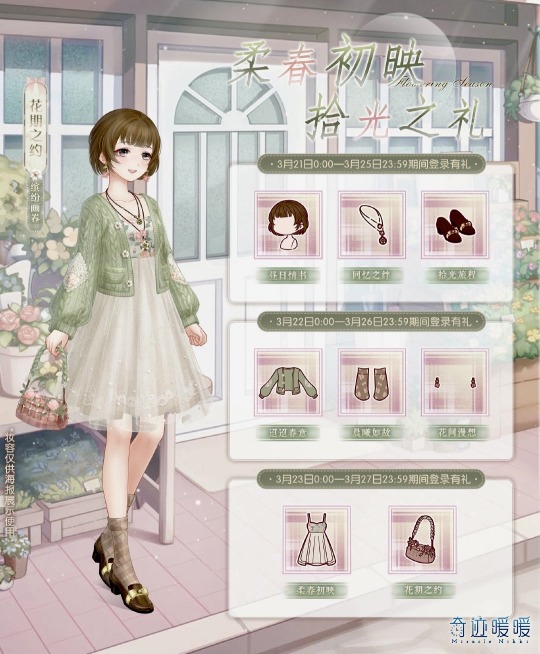
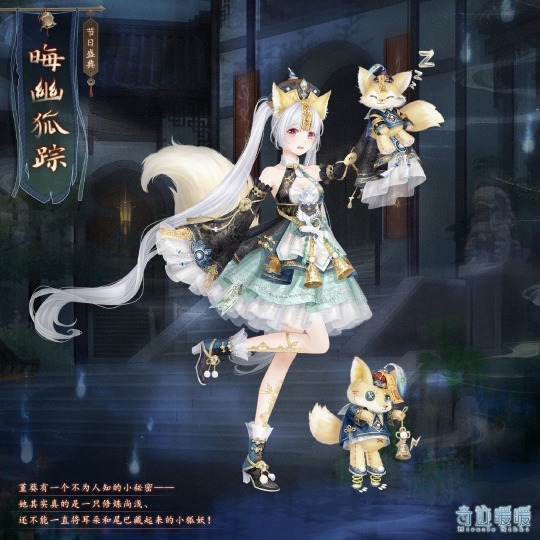



【 Miracle Nikki CN 】 Qing Ming 2023
Suit Display ::
P.1 :: Flowering Date (花期之约)
The Dark Wonderland located on Yunyun Long Street is a very famous paradise for testing courage.
The well-received commemorative doll is actually a powerful work of the little fox demon Jinkui
P.2-5 :: Obscure fox trace (晦幽狐踪)
Collection ::
P.1 :: Gallery
P.2-5 :: Festivals (Qing Ming 2023)
Type ::
P.1 :: Free Sign-In
P.2-5 :: Event
Date ::
P.1 :: 21—27/03/2023
P.2-5 :: 27/03—05/04/2023
#Gallery#Festivals#Qing Ming#Qing Ming 2022#Free#Event#奇迹暖暖#Miracle Nikki#Love Nikki#Nikki Up2U 3#Nikki 3#Dress-Up Game#Orangecatty#Nikki Diary Thailand
26 notes
·
View notes
Text
【 Shining Nikki CN + TW 】 Qing Ming Festival 2023
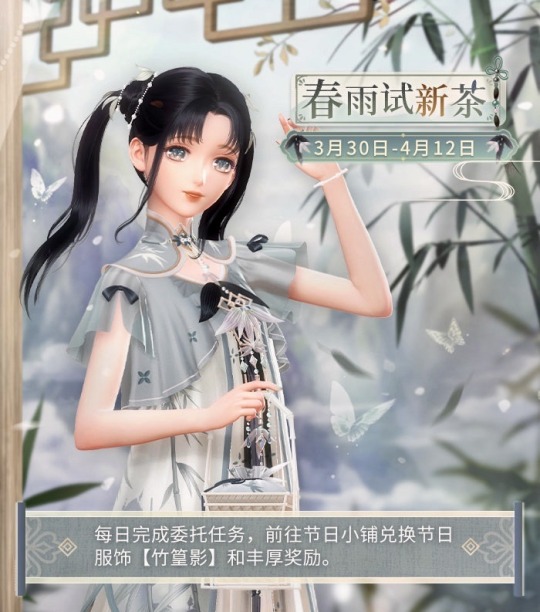

【 Shining Nikki CN + TW 】 Qing Ming Festival 2023
Bamboo shadows from distant mountains splashed on the skirt, drawing an ink painting scroll.
Suit Display :: Bamboo Shadow (竹篁影)
Collection :: Festive Celebration ( Qing Ming 2023 )
Designer :: Wen Feihua (溫飛花)
Rarity :: SR
Attribute :: Fresh
Type :: Welfare
Date :: 30/03—12/04/2023
#Festive Celebration#Qing Ming#Qing Ming 2023#Welfare#Wen Feihua#SR#Fresh#闪耀暖暖#閃耀暖暖#Shining Nikki#Nikki 3D#Nikki Up2U 4#Nikki 4#3D Dress-Up Game#Orangecatty#Nikki Diary Thailand
19 notes
·
View notes
Text




1 note
·
View note
Text
Hi Producer (正好遇见你) Infodump
Disclaimer: I have no idea about the accuracy of the information shared in the drama, I'm merely transcribing for future reference purposes. Proceed with caution!
.
Ep 34-35: New Year Customs
The Spring Festival has a history of over four thousand years and is the biggest traditional festival in China.
.
New Year Paintings


.
Ming and Qing Dynasty Customs of the New Year Eve
According to the "Essence of Life: Food and Drink" in the book "Zhuo Zhong Zhi" from the Ming dynasty, on the 30th day of the last month, people visited each other and exchanged blessings. It's known as bidding the year farewell.
Hanging a peach wood board/peach charms next to the door, written on them the names of two door gods, Shen Shu and Yu Lu to suppress evil spirits.
Ashes of premium charcoals used in the palace are moulded into a pair of general statues with black faces and hands to work as door gods. In addition to Shen Shu and Yu Lu, Qin Qiong and Yuchi Jingde, Guan Yu and Zhang Fei are all revered as door guardians by the folks.
Pictures of God of Happiness, the Ghost Judges, and Zhong Kui are also hung inside the house. People would hang gold and silver ornaments on the bed, as well as Xifan prayer wheels. They would also weave dragon figures with coins.
Eaves were hung with bundled sesame stalks. Children of common folks would step on the sesame stalks spread across the courtyard to crush them, symbolizing peace throughout the year.
Palace servants burned cypress branches in the courtyard to symbolize good things happen as wished, thus named "yusui."
Archaeological findings showed that delicacies resembling the shape of dumpling had appeared in China since the Spring and Autumn period, called the "laowan." The custom of eating dumplings during the Spring Festival in the northern region is said to commemorate Zhang Zhongjing, the Medical Saint of the Eastern Han dynasty, and has existed for over 1,800 years. On the first day of the lunar year, a type of boiled delicacy called "bian shi" enjoyed by emperors of the Ming dynasty and the "zhu bo bo" in the palace of the Qing dynasty are all dumplings.
Unlike the Ming dynasty, it is said that Emperor Taizu of Qing established a family rule that the emperor must eat vegetarian dumplings on the first day of the Lunar New Year to honour the innocent lives lost in wars. In the book "Celebrate the Spring Festival in the Forbidden City" it's said that vegetarian dumplings in the Qing palace were mainly filled with dried vegetables, including little hogweed, citron daylily, jelly ears, mushrooms, sliced bamboo shoots, and seitan. According to other research materials, dried tofu and eggs were also included. They had to be wrapped before midnight on New Year's Eve and boiled after midnight so they may be ready for the New Year.
Only in the 11th year of Emperor Guangxu's reign) did the book "Shan Shi Dang" mention pork and purslane were consumed on New Year's Day and that pork and spinach were used as dumpling filling.
youtube
Ceremony of Marking the Documents by the Emperor (writing New Year Blessings), Having spring rolls and hot porridge on the first day of New Year, Serving the Emperor Jiaobai wine and the Great Auspicious Box of various symbolical fruity and seed snacks, Custom of "Tossing a Thousand Gold".
youtube
.
The Lantern Carnival

An ancient traditional folk custom in China, legend has it that Zhang Daoling of the Eastern Han dynasty held a lamp-lighting ceremony in Sichuan 1,800 years ago from now, and it is the archetype of China's original lantern carnival. Of all lantern carnivals in China, the most grandiose is the one held at the Lantern Festival. In the records about the Sui dynasty in the "Comprehensive Mirror in Aid of Governance", Emperor Yang of Sui set a place for around a hundred kinds of performance at Duanmen Street in a 5,000-step radius of the place, almost 18,000 musicians were playing instruments. The sound of music could be heard from dozens of Li away. The event lasted from dusk until dawn, with large amounts of candles and lights illuminating the night sky. The festival lasted for an entire month and cost a significant amount of money.
It can be said that the Lantern Festival has been a national celebration in China since ancient times. Not only were there colorful lights and lanterns on the streets and hills, but also brilliant performances with singing, dancing, and various shows and talents, bustling with crowds all night long until drawn.
Today, with the integration of local folk culture and customs, lantern carnivals have become even bigger in scale and more diverse in form.
.
Some more misc stuff:
Lantern riddles
Poems, puns, and acrostics with amusing gags, brain teasers are inserted in the silhouette of the silk lanterns.
Fried Lightly-Leavened Mantou
A traditional dish and a seasonal snack in Jiangsu, small in size.
Sugar painting
The art has over 400 years of history and is popular with children. The late Ming literary scholar Chu Renhuo's "Jianhu Supplementary Collection" records sugar paintings, or "Sugar Prime Minister", being made and used as offerings to the deities during the Ming dynasty.
See here:
youtube
.
Soup made of Prickly Water Lily, also known as Gorgon fruit
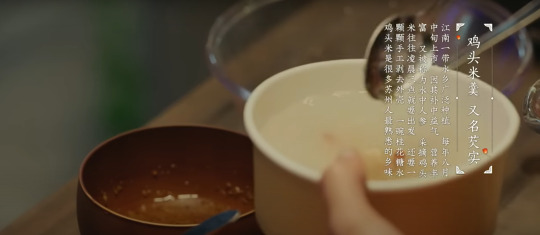
Chinese puppetry
Originated in the Qin and Han dynasties., it was a form of Han Chinese puppetry. Most of the string puppets in Quanzhou, Fujian are about 2.2 Chi in length. They are beautifully crafted and vividly made. They are pulled by 30 or more suspended strings or wires and require a high level of skill in handling. It is one of China's most difficult traditional puppet shows.
Paper cutting
One of the oldest folk arts of the Han Chinese. The art of paper-cutting was included on the first national list of intangible cultural heritage by the State Council in May 2006. In September 2009, it was listed on the UNESCO Representative List of the Intangible Cultural Heritage of Humanity.
Shadow play
Chinese shadow play began in Han and flourished in Tang. Plain paper was used in the early Song dynasty, and later on, lustrous sheepskin was adopted. In the Yuan dynasty, shadow puppetry spread overseas. Later generations used animal skins and cardboard to make shadow puppets, which were manipulated behind a curtain with percussion and string instruments to perform a variety of shows based on legends and folklore.
Suzhou-style Wonton
Suzhou-style Pan Fried Buns are known for its thin skin that wouldn't break or burnt. Baked after lightly leavened, full of fresh and juicy filling and soup, soft on the top and crispy on the bottom.
.
Documentary Segment:
youtube
.
More Hi Producer posts
#cdrama#chinese drama#正好遇见你#Hi Producer#chinese history#Ming dynasty#Qing dynasty#chinese new year#spring festival#new year customs#lantern festival
0 notes
Text
I desperately need more fics showcasing Xianle culture or the fact that it's old and Xianle Trio and Hua Cheng really remember it (and the ghost lady)
Examples:
At some festival (in Heaven?) there is a song played on instruments with no singing, nobody knows there even are words to it until Xie Lian starts humming them
Translator spell stops working one day and the newer gods can somewhat understand each other but they don't know what the older gods ( trio, Pei Ming etc) are really saying
Feng Xin and Mu Qing slowly forgetting Xianle language over the years and not being able to speak it to Xie Lian later (+ if they relearn it with him so it isn't too sad)
There is a fairytale about a beautiful prince and his good and brave deeds and nobody realises that it's about Xie Lian before his ascension (+ the fairytale mentions some Xianle traditions and everybody is like 'why did they do X in the fairytale?' 'i don't know' and Feng Xin or Mu Qing replying 'oh it's because Y')
And of course some really specific wedding traditions for Hualian wedding ❤️
#someone please do this#you're welcome to use all of these however you want#i just want to read it#writing prompt#fanfiction prompts#fanfiction ideas#tgcf#tian guan ci fu#xianle trio#crown prince of xianle#xie lian#hua cheng#mu qing#feng xin#tgcf headcanon#original post
108 notes
·
View notes
Text
Resource: Pre-SVSSS Timeline
This is a timeline of pre-SVSSS events. It is the same timeline in my analysis post, but simply copy-pasted into its own post for those who would rather just have a timeline to reference without having to scroll past many paragraphs of analysis.
Read the analysis post here!
This timeline operates under the following conditions. For some of these conditions, alternatives are discussed in the post linked above-- if you wish to use any of the alternative calculations, then you're more than welcome to adjust the timeline as applicable for your own use!
"Years" are counted from the first day of the spring festival/Chinese new year, rather than January 1
All character ages are nominal ages, so they were born in the year they are counted as age "1"
Luo Binghe was born after the new year, and so his nominal age is only about one year higher than chronological.
Shang Qinghua met Mobei-jun before the battle of Bai Lu Mountain
The system's time limit for SQH does reference the time of the Qing generation's ascension
The Immortal Alliance Conference takes place roughly in the middle of the year. Based on the fact that it is warm enough for the disciples to dip their feet into a stream and find that pleasant, it would make sense for the IAC to occur in a warmer season (Ch. 4)
If using this timeline, keep in mind that the earliest and latest notes for date rangescan overlap-- do not accidentally have a disciple join the sect before the current peak lords ascend, or have SQH become head disciple after ascension! Dates with ranges are colored green (earliest) and red (latest).
Timeline below:
Earlier than -21 YR
LQG: <10-11
(earliest) Liu Qingge joins Cang Qiong Mountain
-21 YR
LQG: 10-11, SQQ: 12, YQY: 15, QHT: <16, QJL: 16
Shen Jiu sold to Qiu Jianluo
Yue Qi joins Cang Qiong Mountain
--IAC--
-19 YR
LQG: 12-13, SQQ: 14, YQY: 17
(earliest*) Yue Qingyuan enters the Lingxi Caves with Xuan Su
-18 YR
LQG: 13-14, SQQ: 15, YQY: 18, QHT: <19, QJL: 19
(latest*) Yue Qingyuan enters the Lingxi Caves with Xuan Su
Shen Jiu kills Qiu Jianluo and burns down Qiu Manor
Shen Jiu becomes Wu Yanzi's disciple
(earliest*) Yue Qi leaves the Lingxi Caves
(earliest*) Yue Qi becomes head disciple
(latest) Liu Qingge joins Cang Qiong Mountain
-17 YR
LQG: 14-15, SQQ: 16, YQY: 19
(latest*) Yue Qi leaves the Lingxi Caves
(latest*) Yue Qi becomes head disciple
--IAC--
Yue Qingyuan meets Su Xiyan
Shen Jiu kills Wu Yanzi and joins Cang Qiong Mountain
-16 YR
LQG: 15-16, SQH: 15-17, SQQ: 17, YQY: 20
(earliest) Shen Qingqiu becomes Head Disciple
(earliest) Shang Qinghua meets Mobei-jun and becomes inner disciple at age 17
(earliest) Shang Qinghua receives the directive to become head disciple within three years
(earliest) Shang Qinghua becomes head disciple
-14 YR
MF: 2, LQG: 17-18, SQH: 17-19, SQQ: 19, YQY: 22
(latest) Shen Qingqiu becomes Head Disciple
(latest) Shang Qinghua meets Mobei-jun and becomes inner disciple at age 17
(earliest**) Su Xiyan imprisoned and subjected to torture in Water Prison
(earliest**) Battle of Bai Lu Mountain
(earliest**) Tianlang-jun Sealed
-13 YR
NYY: <1, LBH: 1, MF: 3, LQG: 18-19, SQH: 18-20, SQQ: 20, YQY: 23
(latest**) Su Xiyan imprisoned and subjected to torture in Water Prison
(latest**) Battle of Bai Lu Mountain
(latest**) Tianlang-jun Sealed
Luo Binghe is Born
Su Xiyan Dies
(earliest) Qing Generation ascend to become Peak Lords
--IAC--
-11 YR
NYY: 2-3, LBH: 3, MF: 5, LQG: 20-21, SQH: 20-22, SQQ: 22, YQY: 25
(earliest***) Ming Fan joins Qing Jing Peak under Shen Qingqiu
-9 YR
NYY: 4-5, LBH: 5, MF: 7, LQG: 22-23, SQH: 22-24, SQQ: 24, YQY: 27
--IAC--
-8 YR
NYY: 5-6, LBH: 6, MF: 8, LQG: 23-24, SQH: 23-25, SQQ: 25, YQY: 28
(latest) Shang Qinghua receives the directive to become head disciple within three years
(earliest***) Ning Yingying joins Qing Jing Peak under Shen Qingqiu
-5 YR
NYY: 8-9, LBH: 9, MF: 11, LQG: 27-28, SQH: 27-29, SQQ: 29, YQY: 32
--IAC--
(latest) Shang Qinghua becomes head disciple
(latest) Qing Generation ascend to become Peak Lords
(latest) Ming Fan joins Qing Jing Peak under Shen Qingqiu
-4 YR
NYY: 9-10, LBH: 10, MF: 12, LQG: 28-29, SQH: 28-30, SQQ: 30, YQY: 33
Luo Binghe's adoptive mother dies
(earliest) Luo Binghe joins Qing Jing Peak
(earliest) Shen Qingqiu reaches Core Formation
-3 YR
NYY: 10-11, LBH: 11, MF: 13, LQG: 29-30, SQH: 29-31, SQQ: 31, YQY: 34
(latest****) Ning Yingying joins Qing Jing Peak under Shen Qingqiu
(latest) Luo Binghe joins Qing Jing Peak
-2 YR
NYY: 11-12, LBH: 12, MF: 14, LQG: 30-31, SQH: 30-32, SQQ: 32, YQY: 35
(latest*****) Shen Qingqiu reaches Core Formation
-1 YR
NYY: 12-13, LBH: 13, MF: 15, LQG: 31-32, SQH: 31-33, SQQ: 33, YQY: 36
--IAC--
Year 0
NYY: 13-14, LBH: 14, MF: 16, LQG: 32-33, SQH: 32-34, SQQ: 34, YQY: 37
SVSSS Begins
---
Further References and Footnotes:
*Yue Qi was in the Lingxi Caves for more than one year and Qiu Manor had already been destroyed by the time he got out (Ch. 21)
**The birth of Luo Binghe occured a few days after the battle of Bai Lu Mountain. Depending on when LBH was born, it could be at the end of year -13 or the first few days of year -12 (Ch. 21)
***We do not know the earliest a child can join Cang Qiong Mountain, even though the appropriate age for cultivation most likely cuts off somewhere around 15 (due to YQY joining at that age and no comments about him being "too old"). For the purposes of this timeline, I am setting the absolute youngest to age 5, but more realistically a disciple wouldn't join until age 8-10 at the earliest.
****It is unknown whether the only time that disciples can join Cang Qiong Mountain is during the recruitment trials. Therefore, there remains a possibility for Ning Yingying to have joined the sect in the same year as Luo Binghe, but at some point before the recruitment trials due to connections. This can potentially be supported by Shen Jiu joining after the IAC, but at the same time, it is not confirmed that SJ joined CQM immediately, or if he had to wait until the next recruitment trial, so there is no clear canon precedent-- nonetheless, it is still possible. Note that Ning Yingying can only join at this late point if Luo Binghe joins at age 11, and after her. The only hard requirement is that NYY joined at some point before LBH.
*****I have placed this as the absolute latest time SQQ could have formed a golden core because this puts him at having been cultivating for sixteen years. It is a bit of a stretch already , but I don't think that "ten and a few" years could really be any longer than this. It is also worth noting that by the time SQQ reaches core formation, every other peak lord has already done so, with Yue Qingyuan first, Liu Qingge and Qi Qingqi next, and Shang Qinghua most likely last (Ch. 24)
84 notes
·
View notes
Text
The Politics of the Heavens
The heavens are kind of a cesspit, right? Lots of big names hanging out together, dressing themselves up as above mortals and pretending like their very lives don't depend on winning a popularity contest. Like, oh, I'm sure no one talks about it, but everyone is fully aware that each and every one of their peers is a competitor in the endurance race that is the life of a god.
So if you're a god, and you don't want to die, what do you do? Well, there are a few strategies we see employed over the course of Tian Guan Ci Fu that seem effective.
1. Make alliances.
Gods making alliances with each other up in the Heavenly Court to weaken their enemies and bolster each other is, like, central to the politics of the heavens. Do I need to say any more? It's the Three Tumors in a nutshell. Pei Ming(and also apparently SWD in the censored version?) drove Jing Wen out so Ling Wen could take his place, Ling Wen at minimum helped Shi Wudu cover up what happened with the Reverend of Empty Words, and who knows what else. Technically, the Shi brothers have an alliance as well- even though it feels very weird to phrase it like that, Shi Qingxuan definitely benefits from his relationship with his brother. Also, y'know... those thirty-three gods that convinced Mu Qing to drive Xie Lian off the mountain so that they could cultivate and ascend, rather than him.
2. Incite passion.
With the prevalence of social media, we all know that if you wanna get big, you have to maintain the interest of your followers. It's because of that that it's really funny to realize that Feng Xin and Mu Qing are probably so well established because they fight so much. Their rivalry and their competitiveness encourage their followers to compete against each other. We see the perfect example of this at the Mid-Autumn Festival! Every year their followers push themselves harder and harder in hopes of just beating out the other side. Having a target to focus their energies on keeps them invested and engaged in their worship. On the flipside, we see what happens when two gods fail to compete against each other when Quan Yizhen eclipses Yin Yu as Martial God of the West(not that QYZ would have ever intentionally pit himself against his shixiong like that- another way they were doomed as peers). It's a very delicate balance for two gods to keep up a relationship like this. This sort of competition can also be seen between Quan Yizhen's followers and Pei Ming/Pei Xiu's followers.
3. Exert influence.
We have two different types of influence demonstrated in the heavens. The first is coercive influence, seen from gods like Shi Wudu. While his actions attacking the ships of merchants who don't pray to him certainly doesn't earn him goodwill, it also ensures mortals are too scared of the consequences to stop praying long enough that he would lose his position. The other type is charismatic influence, which we see from Yushi Huang. I'm not talking about the influence she has as Rain Master, and the impact she would have if she stopped responding to prayers- I mean her ability to convince her followers to listen to her on a personal level. Perhaps it's because they are actions her followers, as farmers, are already inclined to find sensible, but she has both successfully convinced her followers not to offer Blessings Lanterns, and to take back any offerings they give before they go bad. Those sound like simple things, but we also see Xie Lian fail to convince his followers not to kneel in prayer during his first ascension. It takes power to convince people to break from tradition.
#tian guan ci fu#tgcf#tgcf meta#heaven officials blessing#uhhhhh#feng xin#mu qing#shi wudu#yushi huang#three tumors#i dont really want to tag everyone... lets leave it here#illuspeaks
95 notes
·
View notes
Text
Qing Ming Festival (清明节), also known as Tomb-Sweeping Day in English is a traditional Chinese festival observed by ethnic Chinese in various parts of the world. It falls on the first day of the fifth solar term (also called Qingming) of the traditional Chinese lunisolar calendar. This makes it the 15th day after the Spring Equinox, either 4, 5 or 6 April in a given year. This year the date falls on April 5th. During Qingming, Chinese families visit the tombs of their ancestors to clean the gravesites and temples to make ritual offerings to their ancestors.



#Qing Ming Festival#清明节#Tomb-Sweeping Day#Chinese#Festival#Prayer#Ritual#Joss Sticks#Joss Paper#Candle#Temple#Offerings#Vegetarian Food#Snack#Food#Buffetlicious
32 notes
·
View notes
Text
One random day in heaven (probably after Mid Autumn Festival)
Pei Ming, after just trying a stupid pick up line on Mu Qing thinking he could “turn” him: *running in fear through heaven, half naked*
Mu Qing, persuing in a slow swagger: COME BACK, GENERAL PEI, I SAID I’D HELP YOU! WHY RUN AWAY IF IT HURTS!? ONE STRIKE AND YOU’LL BE FREE OF THE PROBLEM 😈🗡️🗡️
#tgcf#tgcf shipost#tgcf incorrect quotes#Mu Qing#pei Ming#heaven official's blessing#tian guan ci fu
43 notes
·
View notes
Text
[Hanfu · 漢服]The past and present of "eating mooncakes during the Mid-Autumn Festival"
As the Mid-Autumn Festival/Zhong Qiu Jie 中秋节 is coming, let us learn how “mooncakes/月饼” became an iconic traditional food of the Mid-Autumn Festival
🌕🥮Mooncake/月饼🥮🏮
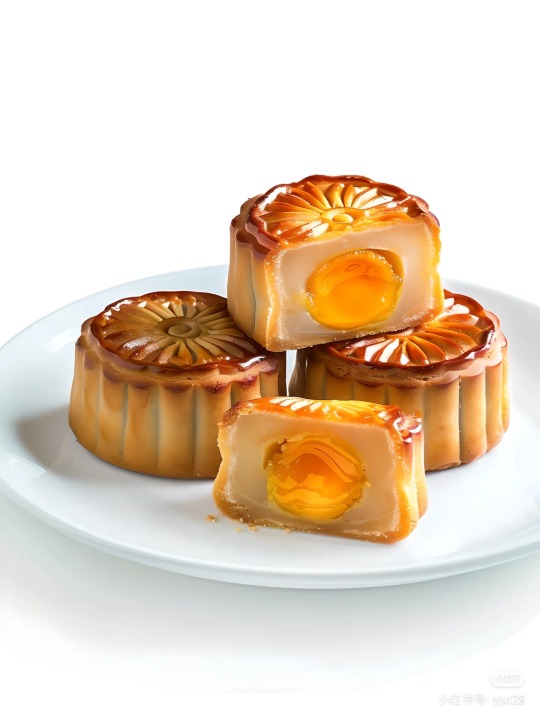
A mooncake (simplified Chinese: 月饼; traditional Chinese: 月餅) is a Chinese bakery product traditionally eaten during the Mid-Autumn Festival (中秋節).The festival is primarily about the harvest while a legend connects it to moon watching, and mooncakes are regarded as a delicacy. Mooncakes are offered between friends or on family gatherings while celebrating the festival. The Mid-Autumn Festival is widely regarded as one of the four most important Chinese festivals.
Mooncakes were originally used as offerings to worship the moon god.
Worshiping the moon is a very old custom in China. It is actually a worship activity for the "moon god" by the ancients. Eating mooncakes and appreciating the moon during the Mid-Autumn Festival are indispensable customs for celebrating the Mid-Autumn Festival in all parts of China. Mooncakes symbolize reunion. People regard them as festive food, use them to worship the moon, and give them to relatives and friends.
Cultural relics believed to be the predecessor of mooncakes were unearthed:
<China Tang Dynasty Baoxiang flower-patterned mooncakes/宝相花月饼>⬇️
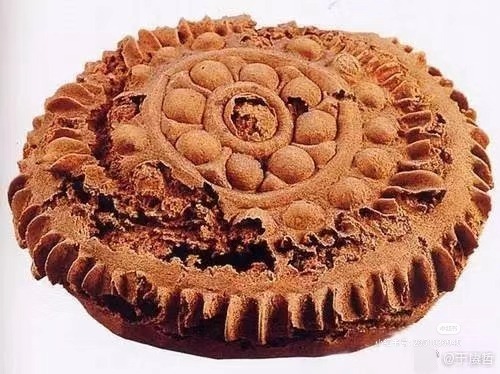
Mooncakes, traditionally offered as a tribute to the Moon Goddess, have a long and rich history. The term "mooncake" was first recorded in the Southern Song Dynasty in Wu Zimu’s <梦梁录/Meng Liang Lu>.
Over time, mooncakes merged with various regional culinary traditions, giving rise to different styles such as Cantonese, Shanxi, Beijing, Suzhou, Chaozhou, and Yunnan mooncakes, all of which are beloved by people across China:
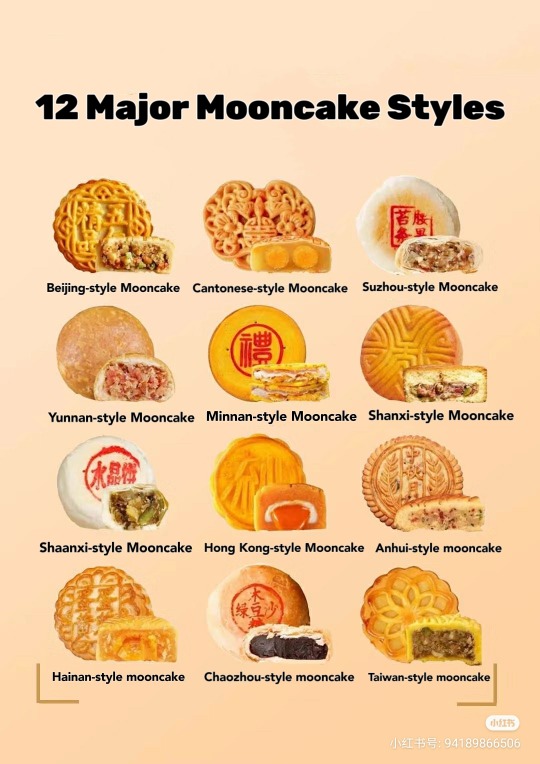
Mooncakes truly became associated with the Mid-Autumn Festival during the Ming Dynasty. In the writings of Liu Ruoyu 刘若愚, a eunuch during the reigns of the Wanli and Chongzhen emperors, he mentioned in his prison work Zhuozhong Zhi 《酌中志》(Vol. 20, "Brief Record of Culinary Preferences"): “八月宫中赏秋海棠、玉簪花。自初一日起,即有卖月饼者。加以西瓜、藕,互相馈送。西苑鹿藕。至十五日,家家供月饼瓜果,候月上焚香后,即大肆饮啖,多竟夜始散席者。如有剩月饼,仍整收于干燥风凉之处,至岁暮合家分用之,曰‘团圆饼’也”
Translation:
"In August, the palace having event appreciates autumn crabapple blossoms. From the first day of the month, mooncakes are sold,it accompanied by watermelons and lotus roots, and are exchanged as gifts.By the fifteenth day, every household offers mooncakes and fruits in worship, waiting for the moon to rise before burning incense and feasting lavishly, with some gatherings lasting all night. If there are leftover mooncakes, they are stored in a dry and cool place until the end of the year, when the whole family shares them, calling them 'reunion cakes.'
In the Qing Dynasty, there were books that detailed the methods of making mooncakes. For example, Zeng Yi, a female writer and female doctor in the late Qing Dynasty, recorded the "Method of Making Crisp Mooncakes" in her book "Zhongkuilu": "Use white ash flour, half of which is steamed in a steamer, and no water vapor is seen; the other half is raw, and kneaded with lard and cold water. Then, mix the steamed flour with lard. Use a ball of raw oil flour, and wrap a small ball of cooked oil flour inside; use a rolling pin to roll it into a cup-sized shape, fold it into a square; roll it into a ball again, and fold it into a square again; then wrap the filling. Use a cake stamp to stamp it, and put it on the stove to cook. For the oil-flavored filling, use cooked flour, sugar, walnuts, etc., and add a little sesame oil, so that it will not fall apart." The method is very similar to today's Suzhou-style mooncakes.
————————
🧚🏻Production & Model/Makeup:@曾嚼子
🔗Xiaohongshu:https://www.xiaohongshu.com/discovery/item/66e66ef70000000026033df2
————————
#chinese hanfu#hanfu#Mid-Autumn Festival#Zhong qiu jie#中秋节#mooncake#Chinese traditional food#Chinese Traditional Festivals#Chinese history#hanfu accessories#china#chinese
371 notes
·
View notes
Text
Flowers and the Song dynasty (960-1279)
I can admit my admiration is driven mostly to Qing and Ming dynasties but fashion wise i would have to pick the Song dynasty (960-1279).
The Song dynasty, naturally as it was the successor of the Tang dynasty otherwise known as the Golden Age of China, was a literal and spiritual renaissance period of china which is also reflected in its garments and general clothing.
Both men and women used to use flowers to garnish their hair as flowers were seen as a connection to nature,elegance and a refined character.
Men, usually the elites used to adorn their heads with flowers and each flower had a different meaning.
The plum blossom represented resilience and purity whereas the chrysanthemum represented longevity and nobility.
Flowers were not only worn but also used in home decoration and as offerings in religious and ancestral rites.
For women flowers represented feminist and of course connection to nature. Commonly worn flowers included peonies, lotuses, plum blossoms, orchids, and chrysanthemums.
Just like in men, each flower had a different connotation, for example, the peony symbolized wealth and honor, while the lotus represented purity and spiritual enlightenment.
Generally people wore flowers during important events such as the Spring Festival or the Dragon Boat Festival.




#china#chinese history#history#education#language#qing dynasty#archaeology#qing#etymology#18th century#song dynasty#ancient china#ancient history#ancient civilizations
8 notes
·
View notes
Text

清明平安
Qing Ming Festival, also known as Tomb-Sweeping Day, is a traditional Chinese festival that usually falls on April 4th or 5th. It is a time for Chinese people to pay tribute to their ancestors and sweep and clean their tombs. During this festival, people will offer food, incense, and other offerings to their deceased loved ones, and burn joss paper as a way to send material goods to the afterlife.
97 notes
·
View notes
Text









1 note
·
View note